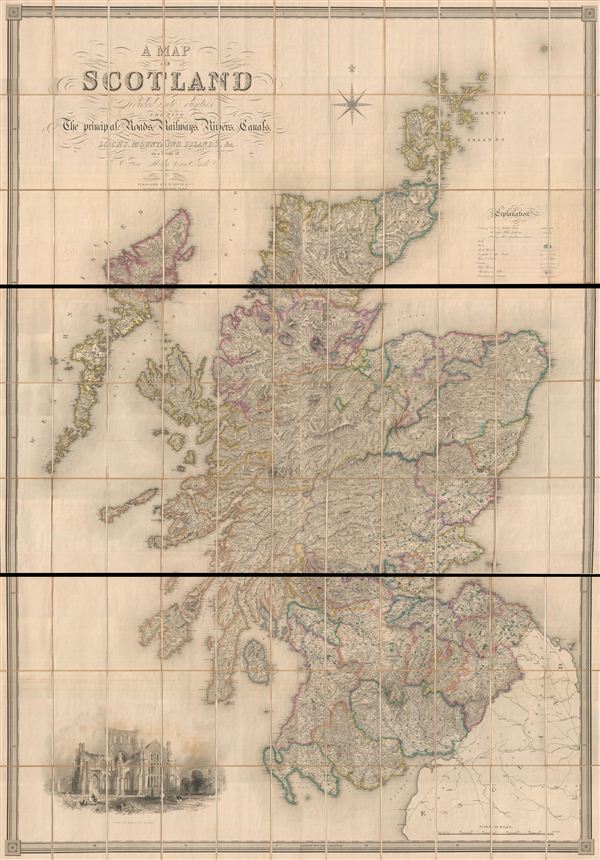This item has been sold, but you can get on the Waitlist to be notified if another example becomes available, or purchase a digital scan.
1846 Lewis Case or Pocket Map of Scotland (3 sections)
Scotland-lewis-1846
Title
1846 (undated) 76.5 x 53.5 in (194.31 x 135.89 cm) 1 : 316800
Description
This map is often identified as the Carrington Map of Scotland, as it was drawn by F. A. Carrington and the topography added by his brother G. W. Carrington. The production was subsequently engraved by I. Dower and etched by T. Harwood. Samuel Lewis and Company of 13 Finsbury Place, South London, is the publisher. The first edition of this map appeared in 1846 and subsequently editions followed in the 1850s and 1860s. Editions vary primarily in format with few if any cartographic changes.
Cartographer
Samuel Lewis (June 2, 1782 – February 28, 1865) was a British editor and publisher active in London, England, during the first half of the 19th century. Nothing of significance is known of Lewis's early life; however, he was most likely of humble birth and had little formal education. He was successfully involved in an important lawsuit against another English map publisher, Archibald Fullerton, which laid a significant precedent for future copyright cases. Lewis is best known for his topographical dictionaries of the British Isles; however he also produced numerous other maps including wall maps, case maps, and general atlases. Samuel Lewis and Company had several offices in and around London: 13 Coleman Street (1829 - 1830), 87 Aldersgate Street (1831-1840), 87 Hatton Garden (1842), 13 Finsbury Place (1846), and 19 Compton Terrace, Islington (1851-1865). Samuel Lewis of London should not be confused with another more important cartographer of the same name based in the United States. More by this mapmaker...

